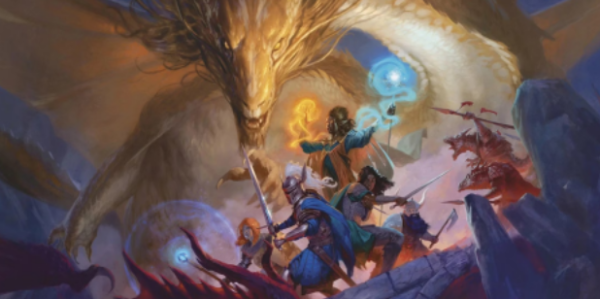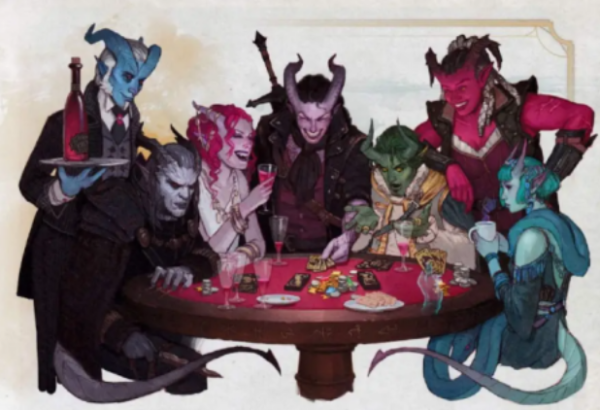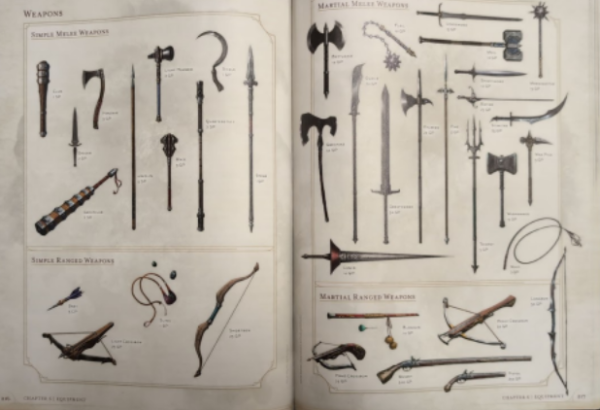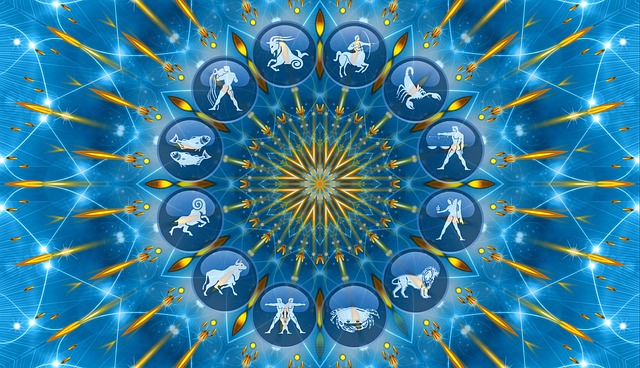What is the context behind the new rework?
In 2014, the nerd world was blessed with the fifth official edition of “the world’s greatest roleplaying game.” Dungeons & Dragons is a game loved by fans since its 1st edition 50 years ago in 1974. I am a fan & one of those nerds and through the past 10 years, I loved my way through the spines of 3 copies of the player’s handbook (my current one being held together with duct tape). Yet of course, nothing is without its flaws. With the growing popularity of D&D and with the popularity of media – such as Stranger Things (American television series created by the Duffer Brothers for Netflix), which featured the game heavily by naming characters after creatures from the game, and even a faithful adaptation of the tabletop game into a video game in the form of Baldur’s gate 3, winning the game of the year award – Wizards of the Coast (the company behind D&D) knew that after 10 years, a rework to the rules was due.
In August 2022, Wizards of the Coast Announced a project called “D&D ONE” which, unlike other rule reworks, was not announced to be a new edition of the core set of books with a whole new set of rules, but a revision of the previous edition that fans loved so much. This is not new to long-stating fans, seeing as this happened to the 3rd edition (2000) with what they called v3.5 (2003). The difference being that while the 3rd edition was changed due to backlash and complaints from fans, D&D ONE is taking what is generally considered the best version of the game and using the fan’s 10 years of feedback and experience to adapt it in a way that caters to the fans.

It’s out, what’s different?
The core set of books are the Player’s Handbook, the Dungeon Master’s Guide, and the Monster Manual, and they are being released separately. On September 17th, during the celebration for the game’s 50th anniversary, we received the 2024 revised Player’s Handbook. What’s changed? We can see the first difference immediately upon opening the first chapter. Instead of a chapter on how to make your character, we instead see a chapter on how to play the game, which was usually left unread after your character was created to learn by playing, but a deep understanding of the rules is essential in playing D&D.
The most obvious change in the rules is the changes to races and backgrounds. In the original 5th edition, the background of your character would give a small bonus to some skills but was ultimately optional and was for roleplay purposes only. In the new ruleset, backgrounds take up half the importance that your race did, giving you tool proficiencies, feats, ability score increases, and starting equipment. Races – now called species – play much less of a role in character statistics, as your ability score remains unchanged no matter what race you choose, encouraging creative and unique character creation. For example, with the old rules, if you wanted a strong character, the game would punish you for not picking a dwarf or an orc (those races increase your strength). In this new rule set, anyone can be anything without penalties, an elf can be a barbarian, and a dwarf can be a wizard without having to make suboptimal character creation choices, which promotes more unique roleplay experiences.

This also changed what species they decided to put in the book. With less importance put on your choice of species, Wizards of the Coast decided that more interesting species should be included (like the Aasimar, Goliath, and Orcs) and the more redundant species (half-elves and half-orcs) being removed.
Another feature the fans have been asking for years is the new rules glossary at the back of the book. Fans have already expressed their love for this change, some even saying it’s the most asked for feature in the entire book. This glossary explains every major rule in Layman’s terms and defines all terminology in the book. This is important for new players because they no longer have to flip through chapters to remember what a certain term means, and it is helpful for lifelong players to check a rule they’ve forgotten.
What I think is the most exciting change to the rules is a new feature given to most non-magic-using classes called weapon mastery. This new feature solves a common complaint that all the weapons are extremely similar and that many weapons are objectively better than others, leaving many weapons having no reason to be used. Weapon mastery gives every weapon one of 8 special properties, which gives you a reason to use previously obsolete weapons. For example, a mace and a shortsword do the same amount of damage, but the shortsword was objectively better because instead of having to use your strength like the mace, it gave you the choice to use your dexterity instead. So why would you ever use the mace? Well now the mace has the “Sap” mastery property and the shortsword has the “Vex” mastery property. Both are helpful in different situations, giving you a valid reason to want to use the mace over the shortsword.

Many other subtle changes breathe new life into this ruleset, such as new feats, all spells from books released after the 5th edition rule book, revised tools, and revised feat categorization.
There’s overwhelmingly positive feedback for the new rulebook and excitement for the next two books. Fans agree that these books are love letters to the people who have played this game for years, telling them that their voices are heard and the people behind the game understand what the fans want. These books are a success!
Sources:
2024 Dungeons and Dragons Players Handbook
https://www.dndbeyond.com/changelog







